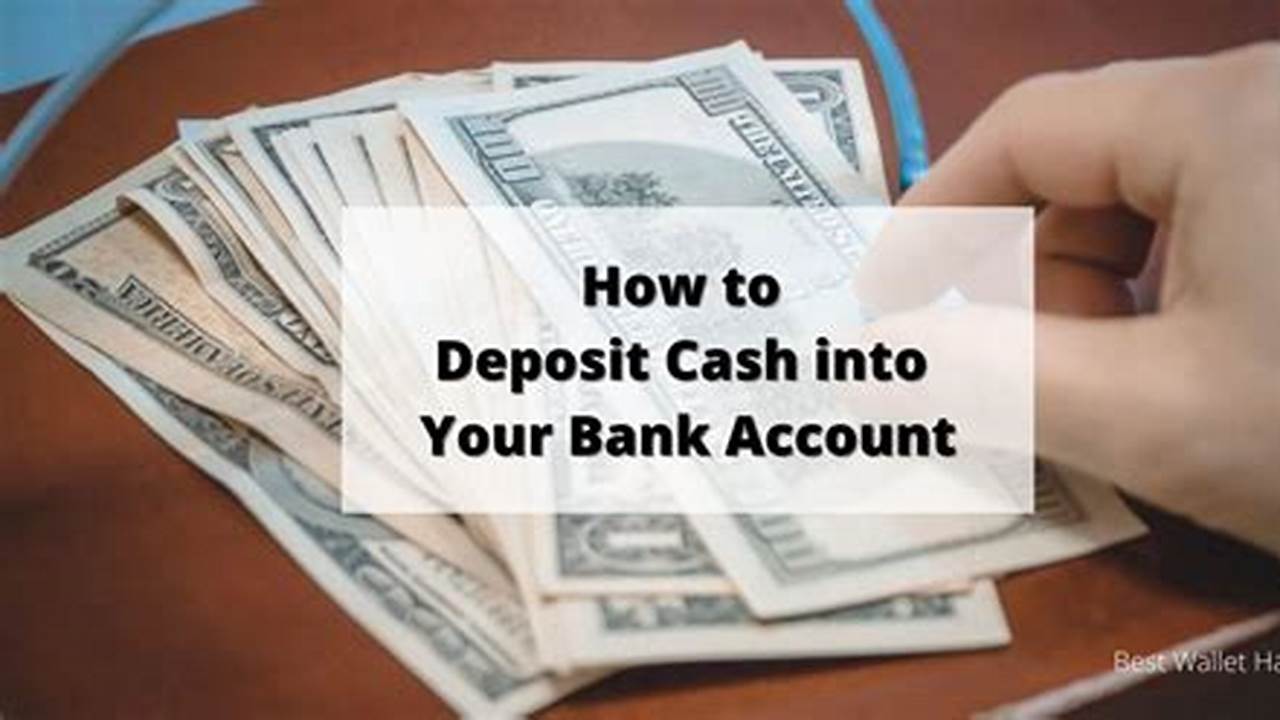Depositing cash doesn’t have to be a complicated process. Numerous convenient methods exist for adding funds to your account, allowing for flexibility and accessibility based on individual needs and circumstances. Understanding these options can simplify money management and ensure funds are readily available when required.
Using a Bank Teller
Visiting a teller inside a branch offers a traditional and reliable deposit method. This in-person approach allows for immediate processing and provides an opportunity to address any banking inquiries simultaneously.
ATM Deposits
Automated Teller Machines (ATMs) offer a convenient 24/7 option. Most ATMs accept cash deposits, often providing instant access to deposited funds.
Mobile Check Deposit
While not directly for cash, this feature allows deposit of checks via a smartphone app, reducing the need for physical bank visits. This can indirectly facilitate cash deposits by allowing quick deposit of checks, freeing up cash on hand.
Depositing at Partner Retailers
Some banks partner with retail stores, allowing cash deposits at designated locations. This expands access to deposit services, particularly in areas with limited bank branch availability.
Mail Deposits (Less Common)
While less frequently used, some institutions allow deposits via mail. This method requires specific procedures and carries inherent security risks, making it less suitable for frequent transactions.
Direct Deposit
Setting up direct deposit for paychecks or recurring payments eliminates the need for handling physical cash altogether.
Peer-to-Peer (P2P) Transfers
While not a direct deposit method, receiving funds via P2P apps can free up cash on hand for other purposes, indirectly serving a similar function.
Prepaid Cards
Loading funds onto a prepaid card linked to a bank account can provide an alternative way to manage cash and subsequently transfer it to the main account.
Money Orders
Purchasing a money order and depositing it like a check provides a secure alternative to cash, particularly for larger sums.
Cashier’s Checks
Similar to money orders, cashier’s checks offer a guaranteed form of payment that can be deposited into a bank account.
Tips for Smooth Deposits
Verify Deposit Limits: Be aware of any limits on deposit amounts imposed by your bank or chosen method.
Endorse Checks Properly: If depositing checks, ensure they are correctly endorsed to prevent processing delays.
Keep Deposit Records: Retain receipts or confirmation numbers for all transactions as proof of deposit.
Count Cash Before Depositing: Ensure accuracy and avoid discrepancies by counting cash beforehand.
Frequently Asked Questions
Are there fees associated with cash deposits?
Fees vary depending on the bank and the chosen deposit method. ATMs and teller deposits at your own bank are typically free, while other methods may incur charges.
How long does it take for a cash deposit to clear?
Clearing times depend on the bank and deposit method. Teller and ATM deposits are often immediately available, while other methods may take longer.
What is the safest way to deposit a large amount of cash?
Depositing large sums in person at a bank branch is generally the safest option, offering greater security and immediate processing.
Can I deposit cash into someone else’s account?
Yes, it’s usually possible to deposit cash into another person’s account, but you may need specific information and authorization.
By understanding the diverse options available for depositing cash, individuals can select the method best suited to their needs, streamlining financial management and ensuring convenient access to their funds.



